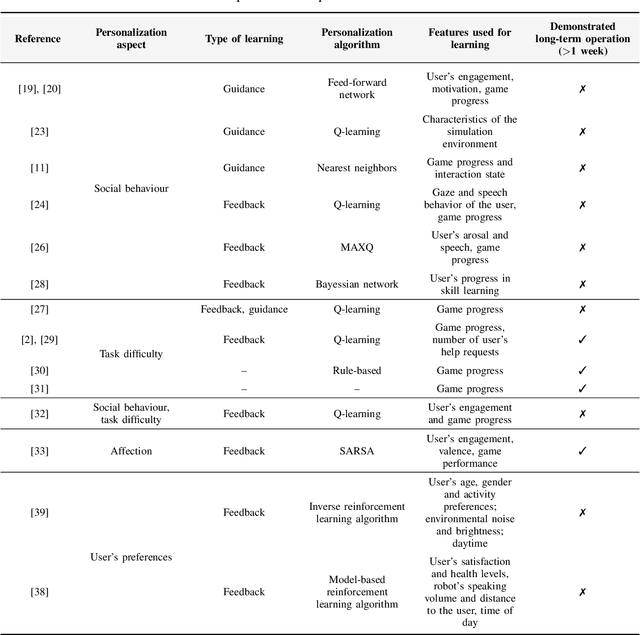Personalized Behaviour Models: A Survey Focusing on Autism Therapy Applications
Paper and Code
May 18, 2022

Children with Autism Spectrum Disorder find robots easier to communicate with than humans. Thus, robots have been introduced in autism therapies. However, due to the environmental complexity, the used robots often have to be controlled manually. This is a significant drawback of such systems and it is required to make them more autonomous. In particular, the robot should interpret the child's state and continuously adapt its actions according to the behaviour of the child under therapy. This survey elaborates on different forms of personalized robot behaviour models. Various approaches from the field of Human-Robot Interaction, as well as Child-Robot Interaction, are discussed. The aim is to compare them in terms of their deficits, feasibility in real scenarios, and potential usability for autism-specific Robot-Assisted Therapy. The general challenge for algorithms based on which the robot learns proper interaction strategies during therapeutic games is to increase the robot's autonomy, thereby providing a basis for a robot's decision-making.
 Add to Chrome
Add to Chrome Add to Firefox
Add to Firefox Add to Edge
Add to Edge